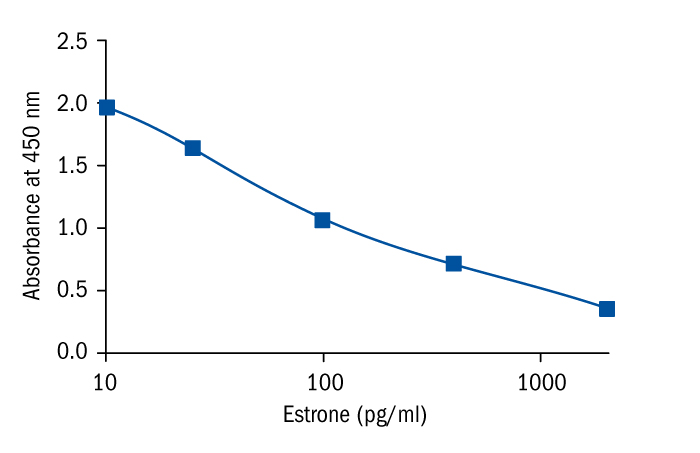Type
Competitive ELISA, Immobilized antigen
Description
For the quantitative measurement of Estrone in human serum by an ELISA (Enzyme-Linked Immunosorbent Assay).
This kit is intended for professional use only and is for laboratory use only. For research use only. Intended to be used manually but may be adaptable to open automated analyzers. The user is responsible for validating the performance of this kit with any automated analyzers.
Applications
Serum
Sample Requirements
50 μl/well
Shipping
On blue ice packs. Upon receipt, store the product at the temperature recommended below.
Storage/Expiration
Store the complete kit at 2–8°C. Under these conditions, the kit is stable until the expiration date (see label on the box).
Calibration Curve
Calibration Range
20–2000 pg/ml
Limit of Detection
14.8 pg/ml
Features
- RUO
- calibration range 20-2000pg/ml
- limit of detection 14.8 pg/ml
- quality controls
Research topic
Steroid hormones
Summary
Estrone is a steroid, a female sex hormone and, with estradiol and estriol, one of the three most important endogenous estrogens.
Estrogens are involved in the development of female sex organs and secondary sex characteristics. Before the ovum is fertilized the main action of the estrogens is on the growth and function of the reproductive tract in order to prepare it for the fertilized ovum.
During the follicular phase of the menstrual cycle the estrone level shows a slight increase. The production of estrone then increases markedly to peak at around day 13. The peak is of short duration and by day 16 of the cycle levels will be low. A second peak occurs at around day 21 of the cycle and if fertilization does not occur, then the production of estrone decreases.
Find documents for the lot
Example Instructions for Use (RUO)
Example Instructions for Use (RUO)
Safety Information (RUO)
MSDS (RUO)

